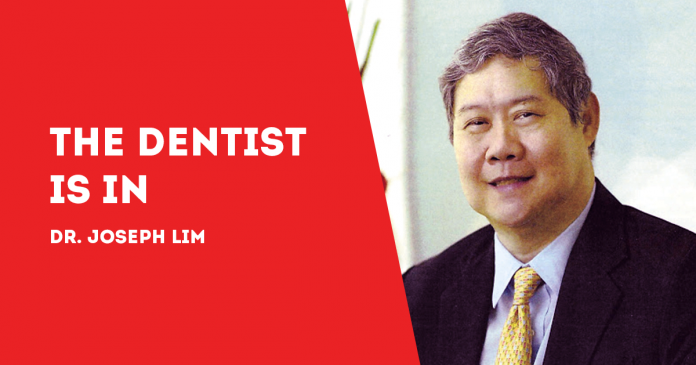
(By Dr. Joseph D. Lim and Dr. Kenneth Lester Lim, BS-MMG, DDM, MSc-OI)
DOCTORS have reconstructed a jaw using 3D-printed teeth, a first in medical history.
The procedure was done in November 2020 on a US Marine Corps Lance Corporal who had nearly all of his lower jaw removed because of a tumor.
It was the first ever immediate jaw reconstruction surgery using 3D-printed teeth.
It’s a long way from the days of George Washington who had dentures made of horse and cow teeth.
Today imaging technology, 3D imaging, computer aided design and 3D printing is changing dentistry, says US Navy Lieutenant Commander Daniel Hammer, a maxillofacial surgical oncologist and reconstructive surgeon at the Naval Medical Center San Diego (NMCSD) who was involved in the first surgery implanting the 3D-printed teeth.
“We are able to obtain 3D imaging of the facial skeleton with increased accuracy and decreased radiation dose,” Dr. Hammer says.
3D images enabled doctors to plan the reconstruction of the patient’s face with unprecedented accuracy, he says. The digital technologies “are more accurate and do not require additional laboratory work,” he says, adding that if a physical model is needed, “we’re able to print the scan on our 3D printers.”
The imaging data can be used to create essential tools such as orthodontic retainers, night guards, milled or printed prototype teeth, or even final restorations, Dr. Andersen says.
Computer-aided design enables doctors to print or mill the final teeth or surgical guides at NMCSD.
“The ability to immediately transfer that data to our imaging software to discuss and plan cases with our team is unbelievably more accurate, consistent, and predictable than traditional methods,” says Navy Cmdr. Mike Andersen, a maxillofacial prosthodontist at NMCSD. “We’re able to combine numerous surgical procedures that were once split up over years of treatment.”
Digital technologies have widened treatment options for doctors and improved the results for patients.
The technologies make patients more willing to get treatment when needed, Dr. Andersen says.
“With 3D planning and printing, I can better articulate to our patients what we plan to complete and achieve for each procedure,” says Dr. Hammer.
“They’re empowered to ask questions and have an easier time understanding the complexity of these procedures because they’re holding models and seeing images of their own procedure completed in a virtual world.”
Many patients with maxillofacial injuries suffer from anxiety, depression, and post-traumatic stress disorders. They experience difficulties in swallowing, speaking, and chewing, affecting their self-esteem.
“The preservation or rehabilitation of a patient’s [teeth condition] is critical to their overall health,” says Dr. Hammer. “That includes their mental health.”
***
Dr. Joseph D. Lim is the former Associate Dean of the College of Dentistry, University of the East; former Dean, College of Dentistry, National University; Past President and Honorary Fellow of the Asian Oral Implant Academy; Honorary Fellow of the Japan College of Oral Implantologists; and Honorary Life Member of the Thai Association of Dental Implantology. For questions on dental health, e-mail jdlim2008@gmail.com or text 0917-8591515.
***
Dr. Kenneth Lester Lim, BS-MMG, DDM, MSc-OI, graduated Doctor of Dental Medicine, University of the Philippines College of Dentistry, Manila, 2011; Bachelor of Science in Marketing Management, De la Salle University, Manila, 2002; and Master of Science (MSc.) in Oral Implantology, Goethe University, Frankfurt, Germany, 2019. He is an Associate professor; Fellow, International Congress of Oral Implantologists; Member, American Academy of Implant Dentistry and Philippine College of Oral Implantologists. For questions on dental health, e-mail limdentalcenter@gmail.com/PN

